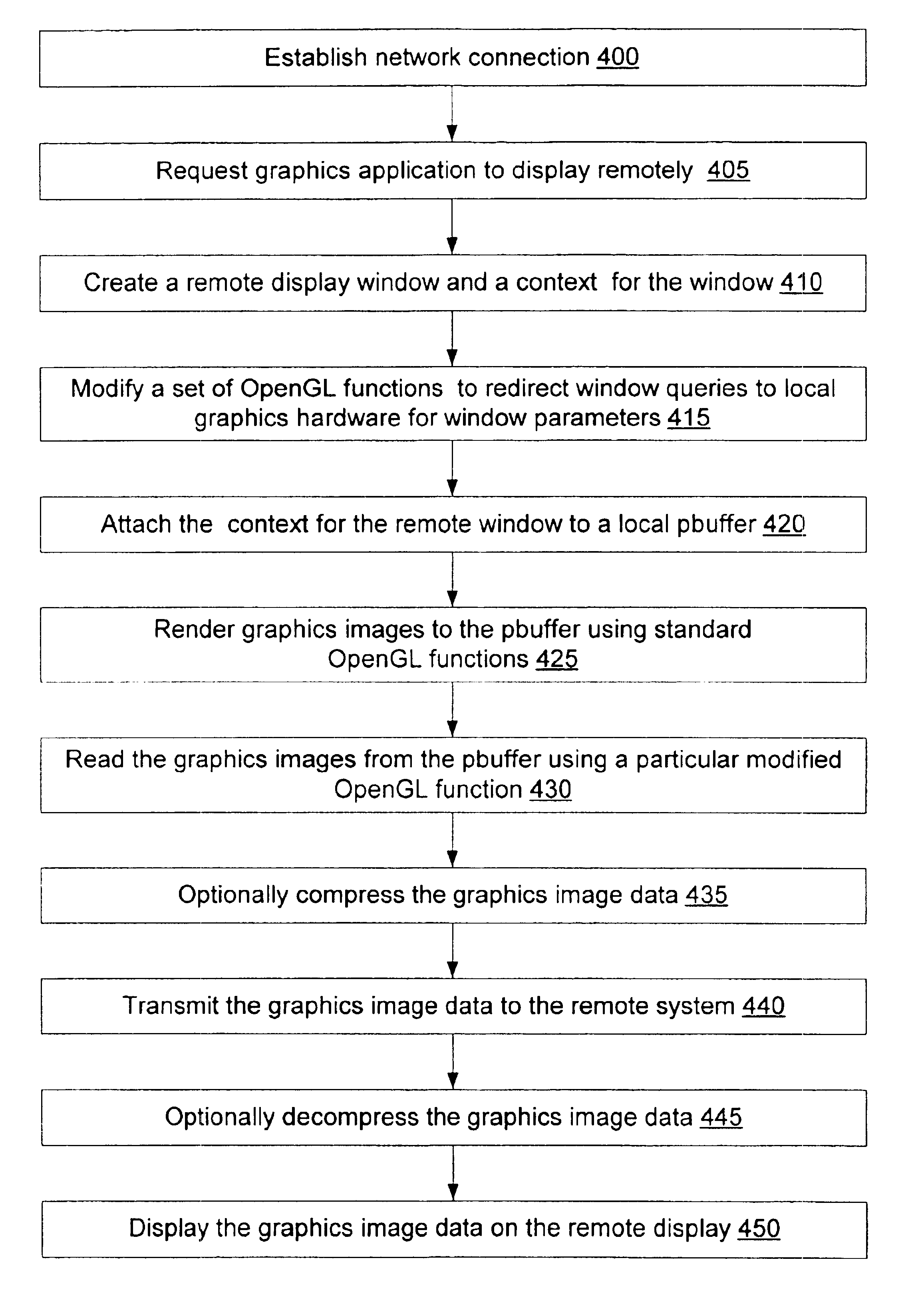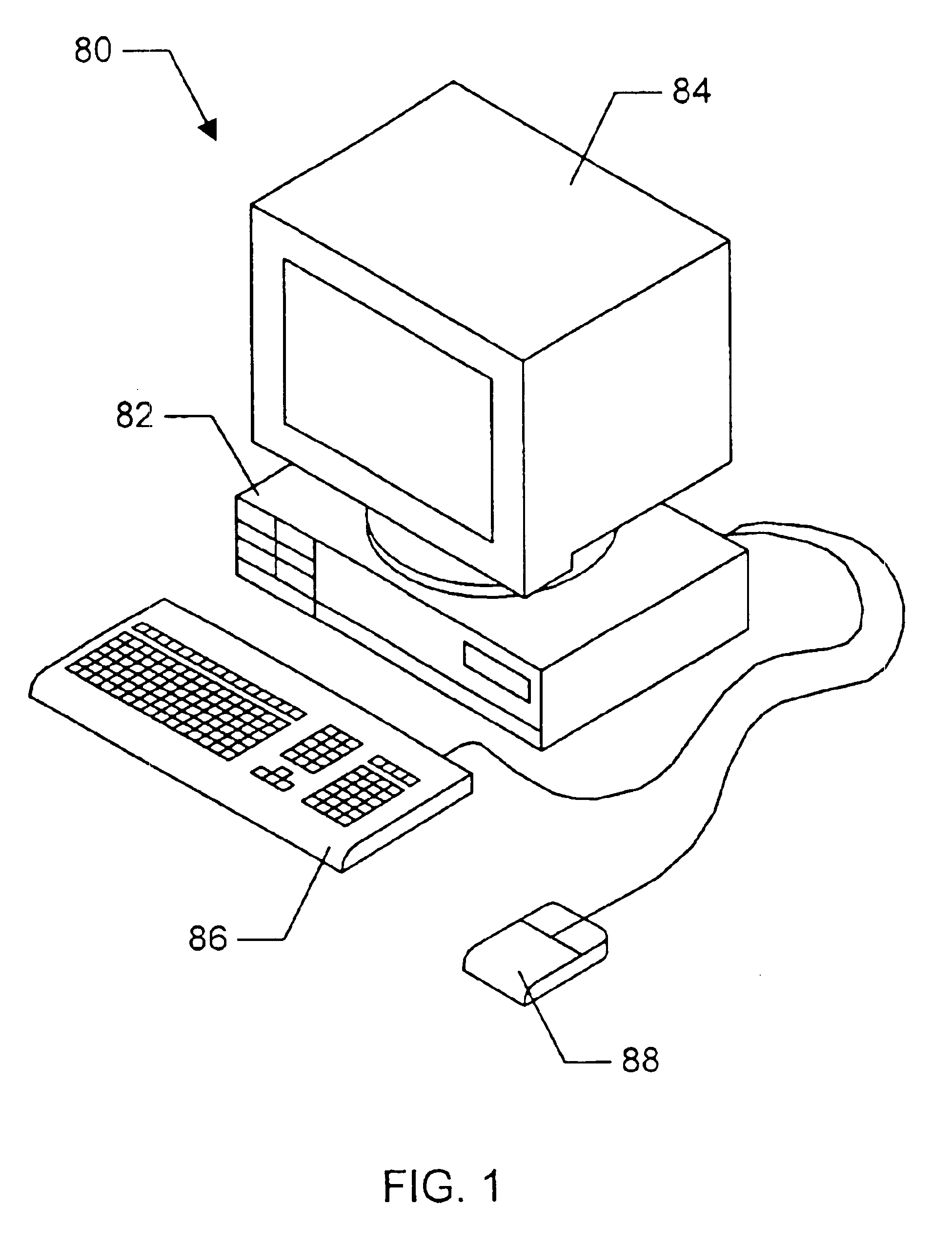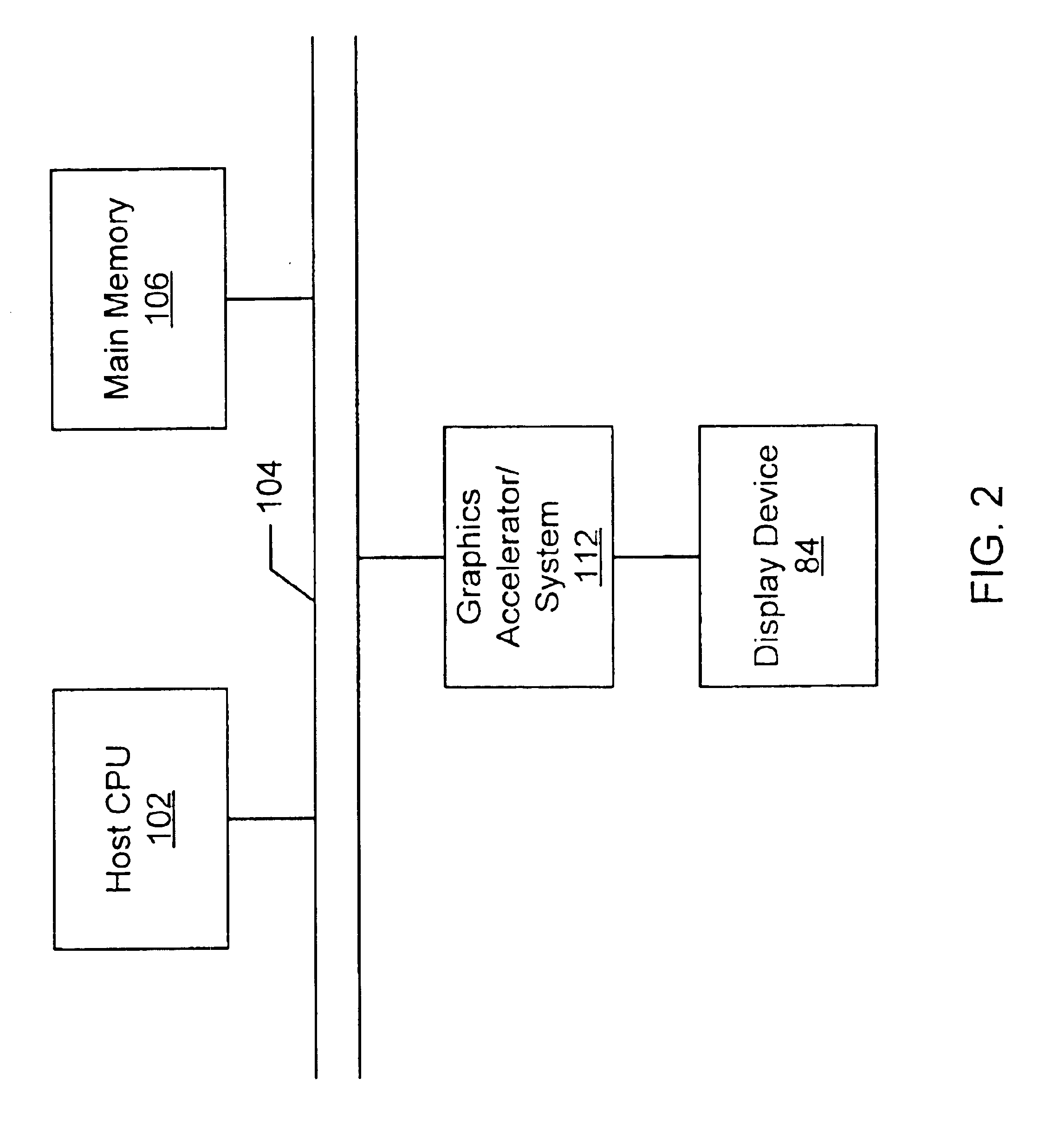Acceleration of graphics for remote display using redirection of rendering and compression
a technology of acceleration and rendering, applied in the field of telecommunication, can solve the problems of affecting the display quality of graphics, the inability of opengl to provide an efficient mechanism for local rendering and remote display, and the significant increase in rendering time, so as to improve the ability to display frames per second and reduce the transmission time
- Summary
- Abstract
- Description
- Claims
- Application Information
AI Technical Summary
Benefits of technology
Problems solved by technology
Method used
Image
Examples
Embodiment Construction
Computer System—FIG. 1
[0020]FIG. 1 illustrates one embodiment of a computer system 80 that includes a graphics system. The graphics system may be included in any of various systems such as computer systems, network PCs, Internet appliances, televisions (e.g. HDTV systems and interactive television systems), personal digital assistants (PDAs), virtual reality systems, and other devices which display 2D and / or 3D graphics, among others.
[0021]As shown, the computer system 80 includes a system unit 82 and a video monitor or display device 84 coupled to the system unit 82. The display device 84 may be any of various types of display monitors or devices (e.g., a CRT, LCD, or gas-plasma display). Various input devices may be connected to the computer system, including a keyboard 86 and / or a mouse 88, or other input device (e.g., a trackball, digitizer, tablet, six-degree of freedom input device, head tracker, eye tracker, data glove, or body sensors). Application software may be executed b...
PUM
 Login to View More
Login to View More Abstract
Description
Claims
Application Information
 Login to View More
Login to View More - R&D
- Intellectual Property
- Life Sciences
- Materials
- Tech Scout
- Unparalleled Data Quality
- Higher Quality Content
- 60% Fewer Hallucinations
Browse by: Latest US Patents, China's latest patents, Technical Efficacy Thesaurus, Application Domain, Technology Topic, Popular Technical Reports.
© 2025 PatSnap. All rights reserved.Legal|Privacy policy|Modern Slavery Act Transparency Statement|Sitemap|About US| Contact US: help@patsnap.com



